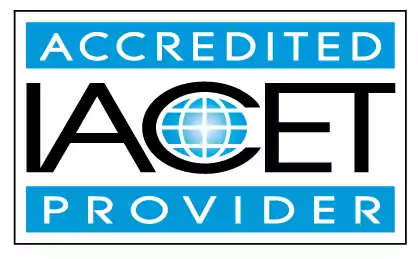Define sedentary activities, including screen time, and their impact and identify time limits per day
Central Objective: Define sedentary activities (including screen time), explain their impact on early childhood development, and identify practical daily time limits. Supporting Elements: Define and provide real-world examples of structured activities, and establish clear standards for daily time spent in sedentary and structured activities in early childhood education and child care centers.Trainings incorporating this outcome
CDA Subject Areas
Proficiency Level
Topic Areas
Price
States
Alabama (1) Alaska (1) Alberta (1) Arizona (1) Australia (1) British Columbia (1) California (1) Colorado (1) Connecticut (1) Delaware (1) District of Columbia (1) Florida (1) Georgia (1) Hawaii (1) Idaho (1) Indiana (1) Iowa (1) Jamaica (1) Kansas (1) Louisiana (1) Maine (1) Manitoba (1) Maryland (1) Massachusetts (1) Michigan (1) Minnesota (1) Mississippi (1) Montana (1) Nebraska (1) Nevada (1) New Hampshire (1) New Jersey (1) New Mexico (1) New York (1) Newfoundland and Labrador (1) North Dakota (1) Ohio (1) Oklahoma (1) Ontario (1) Oregon (1) Pennsylvania (1) Puerto Rico (1) Rhode Island (1) Saskatchewan (1) South Dakota (1) Texas (1) Thailand (1) United Kingdom (1) Utah (1) Vermont (1) Virgin Islands (1) Virginia (1) Washington (1) West Virginia (1) Wisconsin (1) Wyoming (1)
2 hours courses
Related Outcomes
- Define and provide examples of structured activity and set standards for time spent per day
- Define unstructured activity and provide set standards for time spent per day.
- Identify appropriate practices for identify and demonstrate an children: Identify examples of appropriate activities for different ages
- Identify appropriate practices for identify and demonstrate an children: Identify importance of individual planning
- Identify appropriate practices for identify and demonstrate an children: Define Developmentally Appropriate Practice
- Identify criteria that should be considered when choosing appropriate transition activities.
- Define self-esteem and identify issues and strategies for support of school age children.
- Define active play in the early childhood classroom and describe its benefits for young children.
- Define Adverse Childhood Experiences and identify its effects on child development
- Define and identify common signs and behaviors of children and youth with fragile x syndrome.
- Identify indoor activities to plan for infants and toddlers during inclement weather.
- Define and identify common signs and behaviors of children and youth with hemophilia.
- Define and identify the components of developmentally appropriate practice
- Identify components of professionalism in the workplace, including caregivers’ professional responsibilities to children, families, and coworkers
- Identify curriculum and activity resources specific to school-age child care
- Identify regulations as it pertains to program planning, activities, and equipment and toys.
- Define and identify common signs and behaviors of children and youth with fetal alcohol syndrome.
- Identify the difference between teacher-/child-directed activities.
- Identify curriculum and activity resources specific to school-age child care.
- Define and identify common signs and behaviors of children and youth with cerebral palsy.
Related Articles
- The Importance Of Recognizing Obesity In Children
- Physical Activity Guidelines
- Child care education
- Social Media Usage in Children: Risks and Safety Tips
- Best Practices for Classroom Technology Integration, Screen Time Management, and Online Safety
- Building a Back-to-School Routine: Balancing Homework, Extracurriculars, and Family Time
- Dopamine Drama: Why Your Kid's Brain Treats Screen Time Like a Roller Coaster
- A quirky investigation into why kids’ sleep cycles can be unpredictable
- Incorporating Technology in Childcare: Balancing Screen Time and Hands-On Activities
- Integrate Technology in a Way that Supports Learning without Overwhelming
- The“Puzzle Pieces” of Sleep Stages in Children and How they Fit Together
- How Screens Turn Your Child’s Brain into a Battleground of Bliss and Boredom
- Laugh, Learn, and Lift Spirits: Stress-Busting Tips for Early Childhood Educators
- Mental Health for Tiny Elves: Supporting Kids Through Winter Blues
- Cracking the Code of Children's Sleep (And Your Sanity)
- Turn Your Home into a Thriving Family Childcare Business!
- Balancing Screen Time with Hands-On Learning
- 🌙 Is Too Much Screen Time Keeping Kids Awake and Affecting Their Behavior? 😴
- The Connection Between Movement and Cognitive Growth
 0.2 CEUs
0.2 CEUs